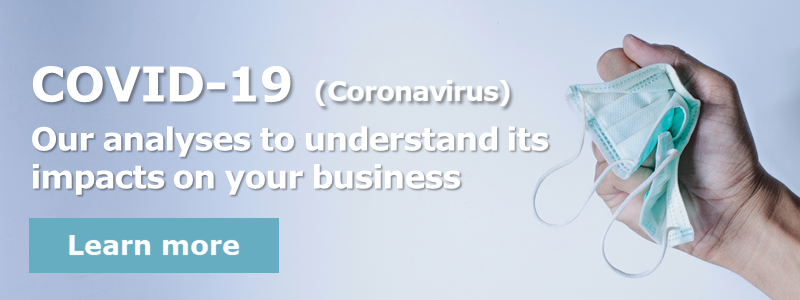As confinement continues, the Autorité des Marchés Financiers (“AMF”) has clarified its doctrine regarding asset management measures that can be implemented in a context of deteriorating liquidity, in a document dated 31 March 2020 entitled “Continuité des activités de gestion en période de coronavirus – l’AMF accompagne les acteurs” (the “Publication”).
1. Maintenance of the principle of continuity
Firstly, it should be noted that although the Publication does not have the same legal value as an instruction, or even a regulator's position, it nevertheless remains an expression of soft law and therefore of the regulator's standards or the interpretive stance on its standard.
Furthermore, a number of statements made by the AMF (see our comments below on swing pricing) encourage us to believe that, for the current period, the Publication in fact modifies the deadlines and certain rules established by the regulator that are applicable in normal times. However, these possibilities remain subject to a clear framework.
As an initial reminder, it should be noted that even during a health and/or financial crisis, the principle remains that regulated players should continue to manage their portfolios and comply with their regulatory obligations. In this respect, suspending redemptions remains a solution of last resort for managers, which can and should only be used in the event of the impossibility of valuing portfolios or meeting redemption requests due to exceptional circumstances.
The decision to suspend redemptions is a particularly serious and significant decision, concerning which the AMF specifies that:
“when the portfolio management company adopts such a mechanism, it must immediately communicate the reasons and procedure for suspending redemptions to the AMF and the authorities in all European Union Member States and all States party to the European Economic Area Agreement where the units or shares in the fund concerned are marketed.”
From this perspective, it would appear important to consider other solutions.
2. Swing pricing and anti-dilution levies mechanisms
The swing pricing and anti-dilution levies mechanisms are designed to reduce portfolio adjustment costs incurred by investors in a UCI for subscriptions and redemptions.
Swing pricing is the mechanism by which the net asset value of a fund is adjusted upwards (or downwards) if the change in liabilities is positive (or negative), so as to reduce portfolio reorganisation costs incurred by the fund's investors due to changes in liabilities.
The anti-dilution levies mechanism has the same aims but based on adjustment of the amount of anti-dilution levies accruing to the fund.
The use of these mechanisms must be indicated in the documentation of the investment fund concerned and the management company using them must have a specific swing pricing policy, in accordance with the Charter of Good Conduct for Swing Pricing and Anti-Dilution Levies Accruing to Funds, published by the AFG (French asset management association) and updated in 2016.
If that is not the case, the AMF reminds in the Publication that amendment of the prospectus is defined as a change not requiring AMF approval. In normal times, however, the consequences of such a change vary depending on the mechanism in question:
- with regard to swing pricing: simple notification of the change, communicated to the holders by any means, is sufficient;
- with regard to the anti-dilution levies mechanism: if it triggers an increase in redemption costs, adoption of this mechanism normally requires holders to have a cost-free exit right. In the current context of Covid-19, however, the AMF has decided to align the procedure for changing prospectuses to introduce this type of mechanism with that of swing pricing, temporarily and until the end of a period of one month following the end of the emergency health situation.
Consequently, anti-dilution levies involving an increase in redemption costs can be established without the obligation to offer investors a cost-free exit. In that case, however, care should be taken to ensure that any adjustment of costs is justified and cannot be considered as a confiscation or deterrent.
3. Gate mechanism
If the interests of investors or the public requires it, a gate mechanism allows requests for redemptions relating to a UCITS, a general purpose investment fund, an alternative fund of funds, a professional private equity fund, a real-estate collective investment scheme (whether professional or not) or an employee savings fund to be temporarily spread out across several net asset values.
The option of using this mechanism must be stipulated in the fund documentation. In addition, when the management company decides to activate this mechanism, it must inform the public under the conditions set out in the prospectus of the relevant fund.
The AMF emphasises that the procedures for implementing gating were specified in its instruction no. 2017-05 and in its position no. 2011-25.
This mechanism remains truly advantageous in that it can be adapted to the specific strategies of each fund, by organising thresholds for triggering redemption blockages adapted to those strategies. However, unlike the aforementioned swing pricing and anti-dilution levy mechanisms, the amendment of the prospectus to include this mechanism requires approval from the AMF and gives investors the option of a cost-free exit for at least 30 calendar days.
4. Side pocket mechanism
This mechanism involves confining the assets of a UCITS or an AIF that cannot be valued or whose liquidity conditions oblige the manager to prioritise the sale of healthy assets for the benefit of outgoing investors (leading to a so-called “last man standing” scenario harmful to the remaining investors). The side pocket mechanism has the effect of separating the healthy assets from the illiquid assets in order to allow the management company to continue managing the healthy assets and so continue to honour subscription and redemption requests for those assets.
This “side pocket” mechanism was created during the 2008 financial crisis, particularly to separate the assets affected by the Madoff investment fraud. Initially, the mechanism provided for a splitting of the fund into two new funds, one with identical characteristics to contain healthy assets and the other a “side pocket” fund to contain illiquid assets.
This initial mechanism was simplified by the Pacte law1 and decree no. 2020-286 of 21 March 2020. The initial fund now retains the illiquid assets while the healthy assets are transferred to a new identical fund resulting from the split. The side pocket fund is therefore no longer a new fund.
In the Publication, the AMF invites management companies planning to use this mechanism to first contact their portfolio manager. This recommendation is perfectly normal in light of past experience and the regulator’s continued desire to verify, as we have already emphasised2, justification for the side pocketing operation and reporting to both investors and the AMF, which are key elements of the system for verifying these procedures.
5. Redemption notice
The Publication recalls that for funds with daily net asset value, the regulations provide for the possibility of requiring subscription or redemption notice. This period may not exceed 10 working days, including a maximum of five working days between the date of execution of the order and the delivery date.
The AMF continues by stating that, according to the regulations, the introduction of a redemption notice period or the extension of an existing notice period must be specifically notified to investors accompanied by a cost-free exit right.
However, the AMF indicates in the Publication that – in view of the particular current situation and the operational difficulties it is causing – it is temporarily allowing an exception to these information obligations and the granting of a cost-free right in the event of extension of the redemption notice period of up to a maximum of two working days, provided that this does not result in the maximum durations of five working days being exceeded between the centralisation date and the settlement date. And therein also lies one of the great advantages offered by this Publication.
This flexibility will come to an end one month following the end of the emergency health situation (i.e., at present, on 24 June 2020).
Conclusion: It seems to us, in view of the possibilities offered by French regulations and the flexibility envisaged by the AMF in the current period, that management companies should take advantage of this phase to adjust or correct their funds’ documentation. In this respect, we should once again welcome the attitude adopted by the regulator, combining a pragmatic and rigorous approach.
[1] In application, particularly, of article 77 of law no. 2019-486 of 22 May 2019.
[2] See Option Finance, 10 April 2020, “Nouveau régime des Side Pockets : plus de simplicité pour plus d’efficacité”, by Jérôme Sutour.
Insight: impacts of the Coronavirus outbreak
Our law firm provides you with legal assistance to understand all Covid-19 (Coronavirus) impacts on your business. Discover our special Insight below.
Find more about our law firm:
Our law firm is a leading international business law firm. Its deep roots, unique positioning and highly recognised expertise enables it to deliver innovative, high value-added solutions in tax, business, corporate and labour law.








%20(2).jpg?v=3)





Social Media cookies collect information about you sharing information from our website via social media tools, or analytics to understand your browsing between social media tools or our Social Media campaigns and our own websites. We do this to optimise the mix of channels to provide you with our content. Details concerning the tools in use are in our privacy policy.